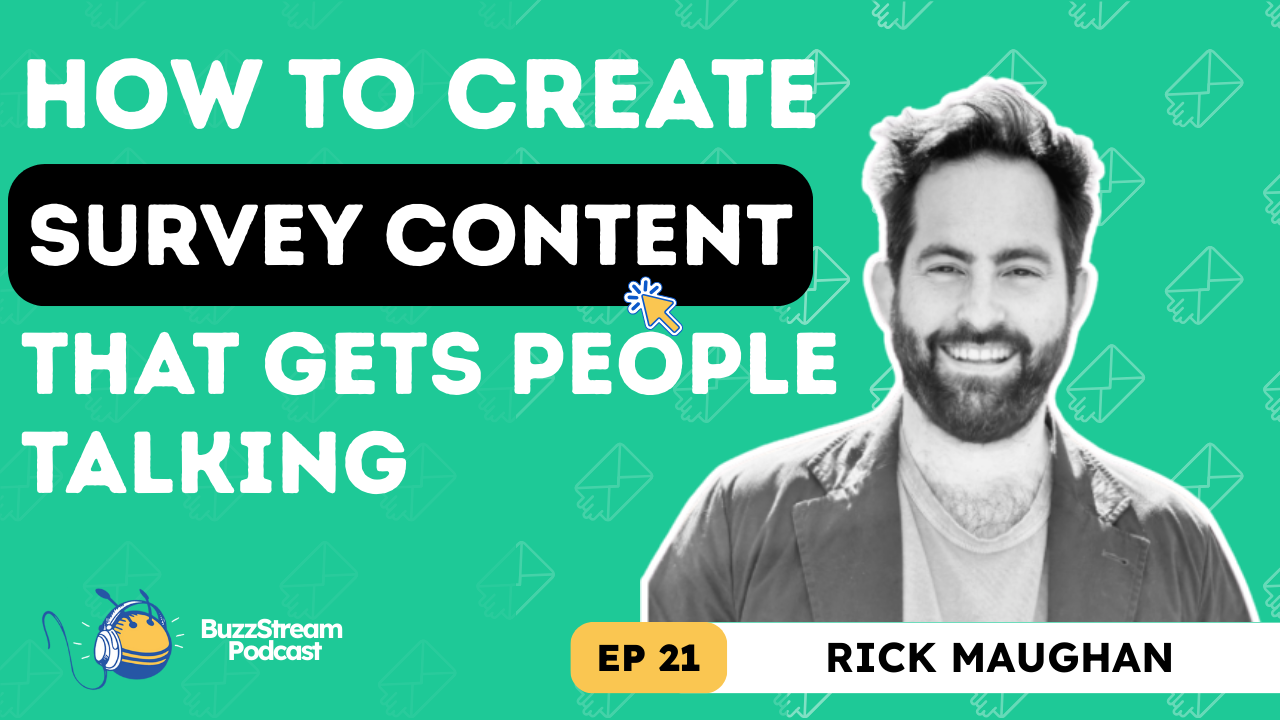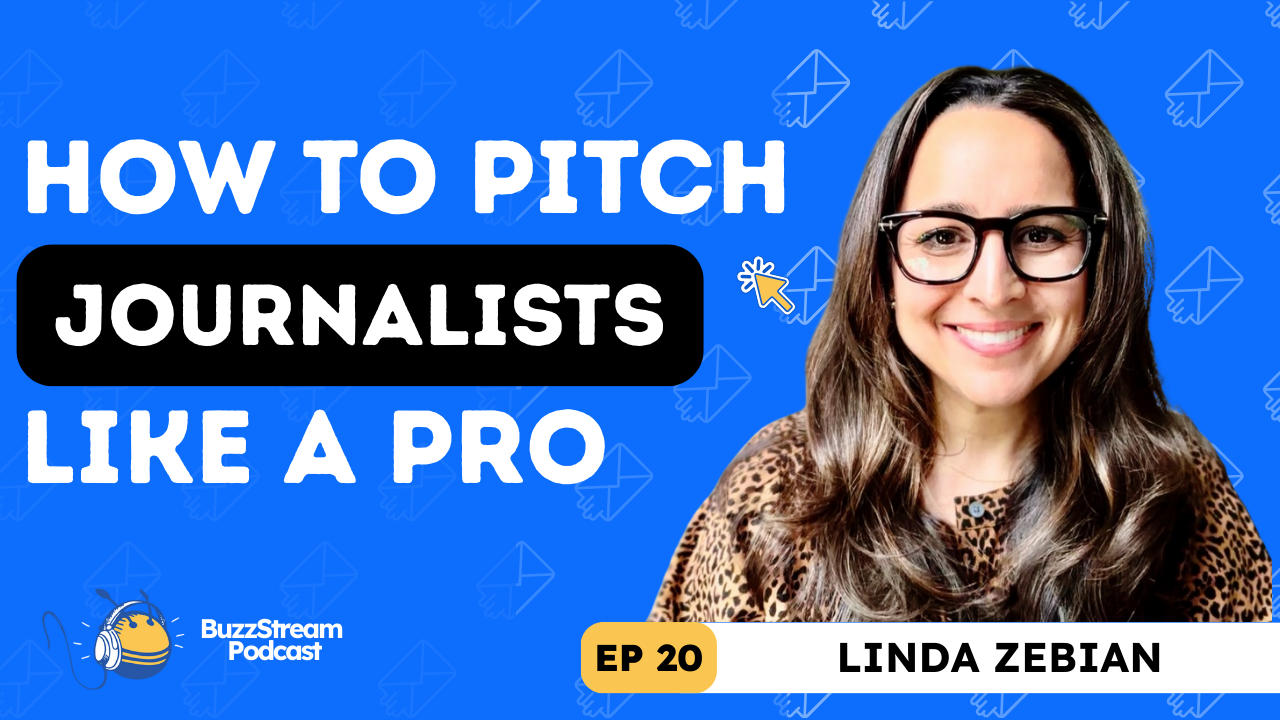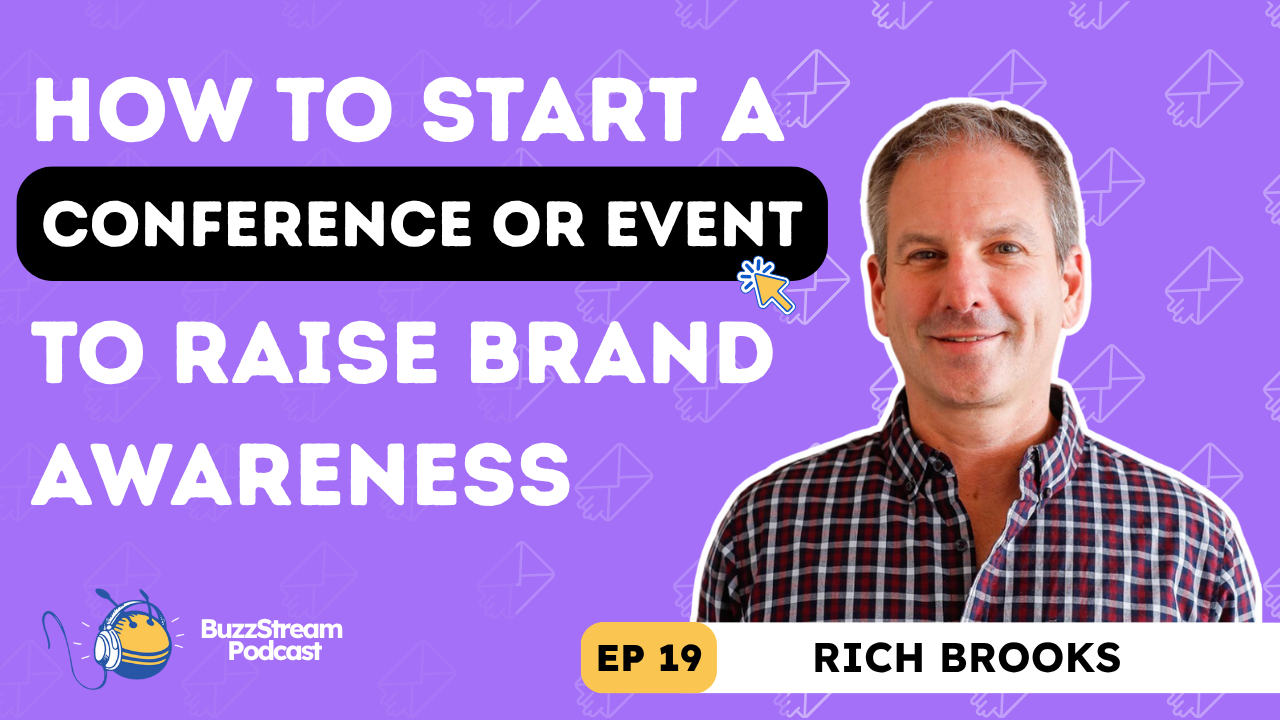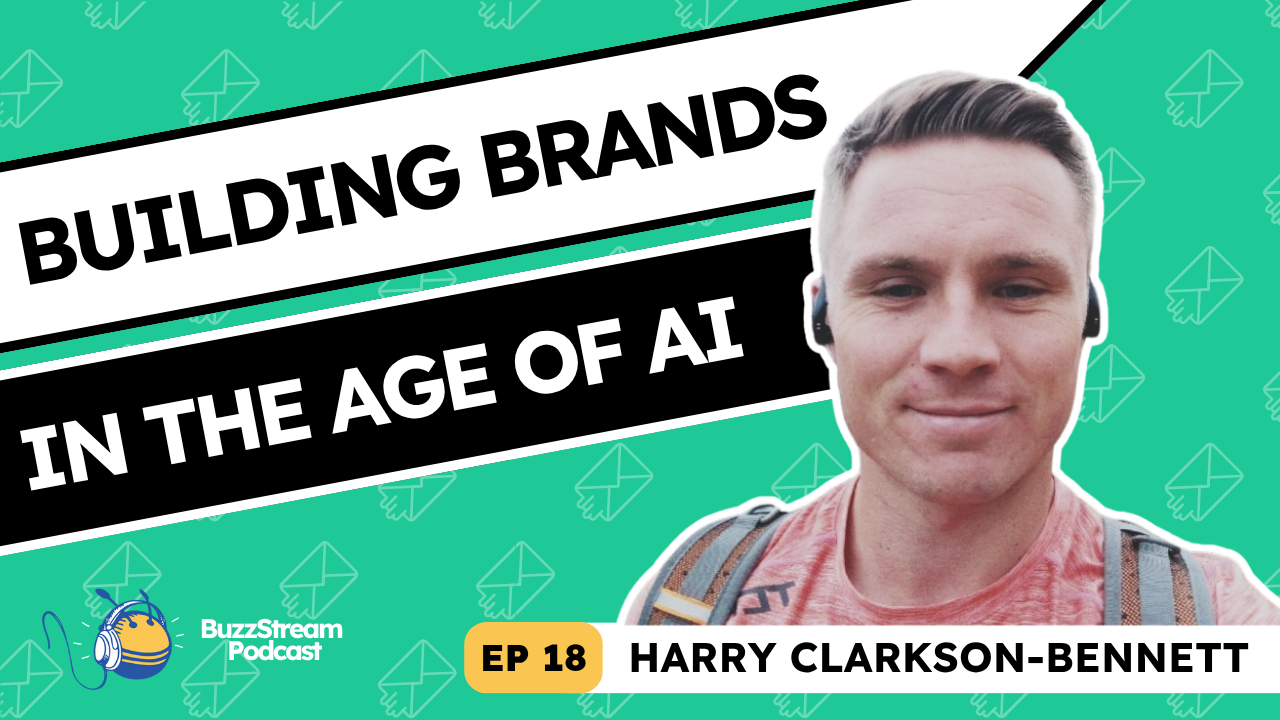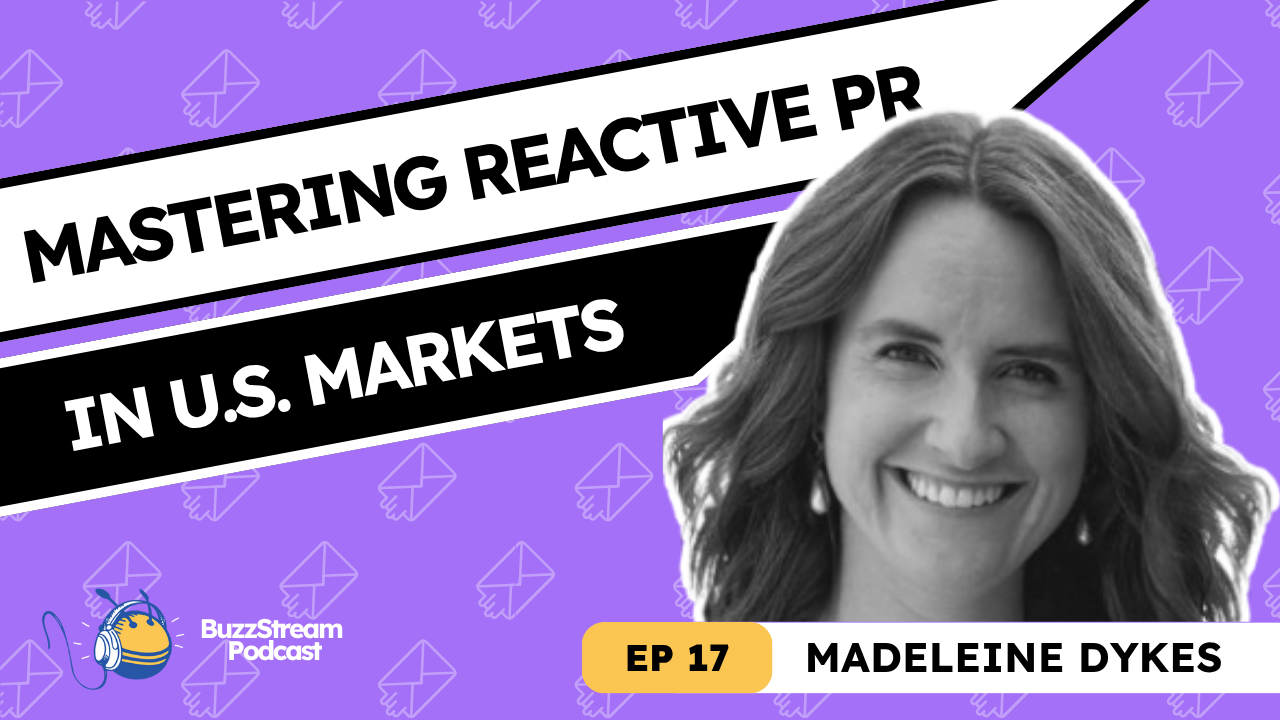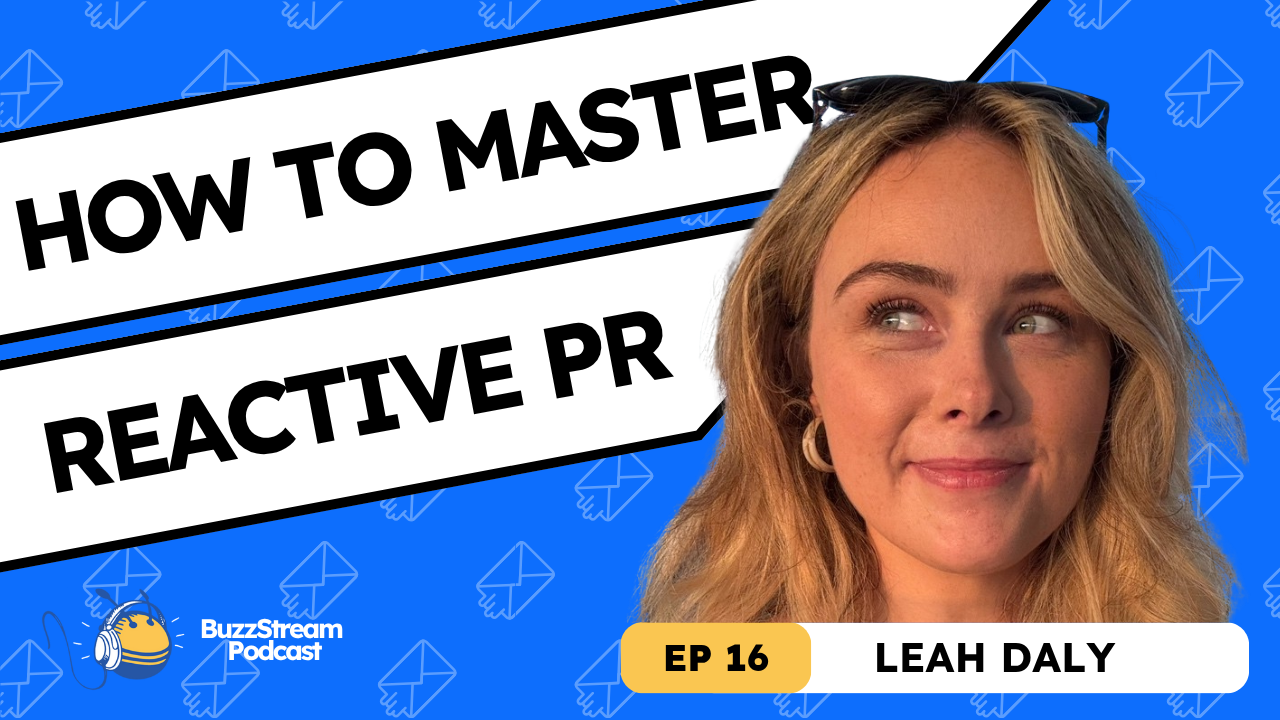Table of Contents
What’s one thing that will keep your campaigns successful?
Relevance.
In this podcast, I speak with Olivia Bence, Head of Digital PR with Bring Digital.
I met during a panel at BrightonSEO in 2024 where she dropped some tips on the subject. Since then, relevance continues to be a buzzword in the industry. So I wanted to get back in touch with her and discuss the growing need for relevance in digital PR given everything that’s been happening in the industry in the past few years.
-
Try to meet relevance for clients and journalists—although it’s a tough ask, this is how you need to be thinking in 2025.
-
Test ideas with trusted journalist contacts before launch to validate interest and improve success rates.
-
Smaller, targeted outreach lists drive better results than high-volume email blasts (we’ve also found that in our study).
-
If starting from scratch, start with smaller wins to build brand credibility before launching large national campaigns.
-
Unlinked brand mentions still have value, especially when your brand is the focal point of the story.
-
Google is increasingly ignoring irrelevant links, so campaign relevance directly impacts SEO value.
-
Use journalist promotions and job changes as opportunities to build new relationships.
-
Olivia thinks relevancy will increasingly outweigh vanity metrics like raw link volume in digital PR.

Below is a slightly edited transcription of our chat.
What is Bring Digital and what do you do?
Olivia Bence: Yeah, of course. So we are an award-winning digital marketing agency based in the heart of Manchester. So we launched in 2012, so we are 13 years old. And we specialize in helping sort. Commerce businesses grow with that kind of high-performance campaign. So we specialize in organic search, paid search, paid socials, affiliates, digital pr, SEO content, and all that jazz.
But we kind of specialize in that e-commerce area.
Vince Nero: Yeah. Awesome. So full service, you’re kind of just a, a piece of the wing or a piece of the puzzle. I’m curious how. I know some of the agencies are very segmented, integrated an agency like that is and the digital PR wing, but tell me a little about that.
Olivia Bence: Yeah, it’s exciting you bring that up ’cause that is a point of discussion that kind of, I. The agency is looking at, like, this year and how we can integrate those services and optimize results for clients. So, for example, like if we get a paid client, how can we incorporate them into digital pr, SEO and things like that.
So, we’re testing and trialing it with a few clients. Kind of having that holistic approach. Yeah, so I think we live in a society now where people go onto the news, they see something, they then might pop on social media, see their favorite influencer or someone talking about that, then they’ll go and search it, and they’ll get targeted by a paid ad.
So, how can we bring all that together to bring this holistic campaign to life? We are definitely becoming a lot more integrated as we go on. I think previously, and I think it’s just natural. I think all agencies become very siloed in their services. They do a fantastic job, but we really want to diversify and become a lot more integrated.
Vince Nero: Yeah, yeah. I mean, it does seem to be all about brand building and mm-hmm. Kind of brand awareness these days. Well, okay, so we’re talking about relevant links. I think the reason that we decided to go down this path was that you brought up this idea, and this was a few weeks ago, I think at this point, maybe a month or so ago.
What happened with ReachPLC recently?
Olivia Bence: It was back in February, and funnily enough, it was Press Gazette that she reported on this.
This Reach PLC journalists had been warned against, including links to third-party commercial websites without permission.
It actually supposedly got flagged because a freelance reporter was trying to add links to some not-so-great sites that we didn’t want to be linking to. So it kind of caused a bit of a crackdown and a look at where they are actually giving links out to. As you can imagine, this caused a bit of a storm within the digital PR and PR world.
There were some fantastic posts on LinkedIn, people giving their opinions. I think when you start to see that kind of news, it’s natural to sort of panic and think, oh my goodness, ReachPLC, the likes of Daily Mirror, there are so many titles that they look after that you do kind of have that bit of a panic.
However, there was no need to panic at that stage. They obviously did say that links. Were added onto their kind of like articles could only be to either reach articles or their own web pages, but it didn’t mean that all reach PLC PLC sites were kind of cracking down on this, on this like link, not not being able to give links, it just meant that it was a little bit harder.
So, it has mainly just been in the UK, but they also have a US website, so the US Daily Express us and a few more. So, from February to now, we have seen a bit of a shift in terms of them giving links.
Like, they only now seem to be on the Giving brand mentions in their articles.
So when it got launched, I think it just kind of ignited this really interesting conversation within the industry about going away from those, like vanity metrics, in the number of links we’re securing, and kind of really honing in on those.
Relevant links, like what links are going to give our clients the most impact? So, I think it really sparked that interesting conversation. While at the time it may have seemed like a really negative thing to happen, I think it sparked a really interesting and positive conversation.
Vince Nero: Yeah, I mean, I do recall a lot of people talking. I mean, it brought up. To light the idea of like the unlinked brand mentions and how relevant unlinked brand mentions are still impactful. I’m curious if you’ve seen any, either studies, that you’ve done internally or studies externally on the impact of something like that, like an unlinked brand mention.
Have you seen any studies discussing the impact of unlinked brand mentions?
Olivia Bence: So it’s something that we will be bringing into our reporting when we report with clients, because, like you mentioned, there is still that value of a brand mention in terms of studies and kind of having that impact of relevant links versus non-relevant as well. From my understanding, there isn’t anything out there that has been a study to showcase that in a little bit more detail.
But back in May 2024, there was a leak by Google. Which revealed that those like mismatched links are kind of being ignored. So basically, obviously, Google ignores links that come from within content that are not relevant. So, there’s that kind of mismatch there.
And as part of, that’s like Google’s algorithm, we know how vital EEAT is for a website to rank and obviously the importance of having experts discussing relevant topics.
But there are a lot of discussions around the value of brand mentions and the importance of relevancy. I would say sort of digital loft, in my opinion. I kind of lead in that way with these types of discussions. So. In a long-winded answer, Vince, there isn’t anything I’ve seen from a study point of view.
However, that doesn’t mean that there won’t be one in the very near future because I do feel that if PR agencies and digital agencies aren’t already, relevancy will be a key. I think that will start to come into our workforce.
Vince Nero: Yeah, totally agree with you there. And I apologize for kind of jumping, I kind of split our, our talk there.
I tried to transition into relevancy, and I think, yeah, let’s kind of make sure these are segmented things.
So, brand mentions: there’s definitely stuff in that Google leak that I think speaks to the brand mentions. Mm-hmm. And their impact. And even something, Olivia, you and I were talking right before this. There was an article I was just reading about the independent publisher.
The Independent was saying, “They’ve been doing these AI-generated summaries of news articles now,” and a study again on the Press Gazette said that the Independent was claiming that users liked these AI summaries.
They engaged with them more. They were showing up on Google Discover.
Their whole reason for doing this was to combat AI overviews, right?
People seem to want that kind of quick summary of an article. They don’t want to read a 2000-page article or a 2000-word article.
And to me, I think the power of the unlinked mention and a brand mention is that it can actually get you.
If your brand is the story in many cases, like you will show up in these summaries.
If people are talking about your brand, you’re gonna show up. It might not be linked, but if it is about you, rather than just like, you’ve inserted yourself in via expert commentary or something, like if the story is about you, you’re definitely going to be more likely to be included in these summaries.
So that’s where my head is at these days. But I don’t know if you have any thoughts on the idea of a brand and building a brand.
Is brand building more important these days?
Olivia Bence: Yeah, no, absolutely. It’s almost like we’re going back to kind of that, that traditional way of doing like PR and like that brand awareness. I think it’s so true. I think you, you spot on.
If you go to a media site or a new site that you are really invested in and you value their opinions and the stories that they read, and you see a brand that they mention, I mean, I don’t know about others, but I would potentially then go and search that brand and say, okay, I’m quite interested in what you’ve spoken about.
That again, is that kind of organic search, driving traffic back to that website. Obviously we can’t attribute it to that specific article, but you know, I know there’s really big discussions around brand awareness and how we can report on that in a. In a specific way, but I do think that there’s some element of having a brand mention in like a, a top tier, really trusted new site that has that link for like trustworthiness and getting that brand awareness and organic search.
Vince Nero: Well, let’s transition a little bit into the relevancy thing. ’cause I think that plays into all of this unlinked brand mention or a link if you’re getting mentioned in a place where you’re creating content that isn’t relevant to your brand. This doesn’t seem to be something that’s going to help you out in the long run necessarily.
Especially now. I feel like maybe in the past you could spin out a lot of articles.
You could get mentions in as many, it, it was, it was more of a scale thing.
You could, you just get as many mentions as possible. Whereas now it seems like we’re learning more and more the power of these relevant links.
So, the question I think I usually come back to with this is, is the problem that people are creating irrelevant content, like I am a student loan site and I’m creating something that doesn’t have to do with student loans, or is it the problem that they’re pitching journalists who aren’t relevant?
Is the problem pitching irrelevant journalists or creating irrelevant content?
Olivia Bence: It is a really interesting question.
I think it’s a bit of both, but I think it’s, there’s a fine line between creating like that relevant content. So if I go kind of like that approach first and then go and jump into that kind of relevant journalists, I think there’s always that question, like, how far can a brand go before it’s just considered completely irrelevant.
I was listening to a really interesting discussion about this with Giselle Navarro. They were having that discussion about relevancy, and I. She was talking about how many brands have been built on the shoulders of irrelevant adverts. She was talking about the Red Bull example, and it really kind of struck a chord with me because I thought, I completely agree with this.
And she was talking about how, like Red Bull, they could advertise themselves on the taste and the energy that they give that gives you.
But they kind of went down the route of it gives you wings and they were looking at that bigger picture and now we associate Red Bull with all these extreme sports, right, right.
They’ve got team like they’ve gone bigger. However, if you were gonna go and pitch that to an SEO agency.
They would’ve been like, no, absolutely not. They’d be like, where’s the keyword? Where’s the relevancy?
Where’s the keywords? Whatcha ranking for it would be point, all of that. Yeah. So I think there’s like a really fine line. You obviously from a digital PR perspective, like wanna create content that sparks a conversation is interesting. Also has that slight relevance, that we are getting links back to either a relevant page, relevant keywords, so we can get them ranking for things.
So when people are searching for specific key terms that they’re gonna be in the search. But we have to be flexible and have a bit of an approach that, we have to be a little bit broader. We did it recently for a client who are a, digital sort of payments provider, so they provide terminals and shops, so when you go and tap your card, like they provide those terminals.
So a very niche client. And potentially maybe not so many topics that we could go for that, we’d be getting links in national titles and we had to create a bit of a trusting relationship with them in order for us to be able to go a little bit broader with for them.
And we did a campaign during the Euro rows, like predicting how many number of pints were gonna be drunk during the euro rows and how much money was gonna be spent. Some people might listen to this podcast and think that’s completely irrelevant. It sounds however, we’re able to get. Coverage and links not only in nationals, but key trade titles that were their target audience.
So we had that relevancy in there for them, which they were really happy with. So I think there’s always that fine line of relevancy from a digital PR and SEA perspective. But then I think flipping that and talking about like the journalists and people pitching to a relevant journalists. We since Covid, it has just been, I think, horrendous for journalists.
Like, I think I spoke last year in my bright SEO conversation that, we’re seeing mass redundancies, we’re seeing people go more freelance. We’re seeing people that we’ve had really close relationships with who have stuck to one specific topic now having to cover a number of desks. So it is probably becoming a bit more like.
Reoccurring that people are pitching to these people, assuming that they’re still covering that kind of one topic and they’re not, and kind of an annoying them. You you sending me something that, that I’m never gonna cover. So there’s definitely that with within that kind of question. Like, we have to be able to take the time to be able to build those relationships with those journalists.
Again, find those relevant contacts, kind of really get to know what they’re writing about. I say to my team that when we’re putting ideas together for, for clients, let’s trial an idea with a key contact of ours at a a media site and see if they like it or not.
Because then we’re getting that key insight.
So we’re not sending the journalist irrelevant stuff and we know that we’re sending stuff to a client that we know the media are gonna be interested in.
Vince Nero: Yeah, I really like that kind of pre-vetting these ideas with, with journalists, it’s probably one of the. Better reasons to build relationships with journalists as well.
Right. Being able to, to vet them.
Olivia Bence: Yeah. Hundred percent. Like I say, you wanna, it’s great to have that little black book of contacts of journalists that you have spent time building those relationships with that you are able to, to help them and they can help you. I always say, like, to my team, and when I first started out, I remember bringing up news desks.
All the time pitching these, these, these surveys and stories that is long gone now. Like that is absolutely gone and it’s now all more, a lot more targeted in your approach to pitching to journalists. And I think the more that you can showcase to them that, that we wanna help, like we wanna make your job as easy as possible, the more you can get out of it as well.
So yeah, if we can pre-vet, I’m always like, do it. Obviously we don’t always get the opportunity, but if we can, we, we, we do do that.
Vince Nero: Yeah. Yeah. I want to jump back before we get into the relevant journalist thing too. I wanna jump back to something you said about the content yeah, ideas and kind of the strategy behind it.
I think, like some of the, the challenges that people run into here is this idea that like, my audience is everybody. Yeah. Right?
So like, it’s okay for me to do a piece of content that will resonate with my audience, but you might not get links from relevant places. Like even the Red Bull example, right?
Like. I think that’s probably an example there where, they’re getting in front of their target audience through kind of non relevant content, so, or irrelevant content. So, I, is it just about kind of creating a balance between this is content for them and this is content for SEO? Like what, what is that, that mindset?
Absolutely. Yeah.
Can you still get irrelevant links if your audience is universal?
Olivia Bence: It’s interesting you bring it up. We had a, a recent kind of discussion like that with another client of ours and. Wanted to get into like these like super, like targeted, like very niche titles, and we said, okay, we, we can certainly create a bit of a strategy that can, we can get into those titles by creating content that sits well for them.
However, that SEO side of things and kind of more of a case of. We needed to improve their BAT link profile. We are not gonna be able to improve their BAT link profile if we are just gonna be targeting those really niche titles. So I think there is absolutely a balance. So what we kind of did is kind of like split it down to like 20% of our activity will focus on trade for X, Y, and Z.
Or these niche titles. 80% will be focused on a bat link kind of activity where we go a little bit broader and we create content that’s gonna be interest like. The sort of consumer will be more interested in. Now granted, sometimes that approach doesn’t always work and clients are adamant that they don’t wanna go as broad as possible.
Mm-hmm. And that can always be a little bit of a challenge and a little bit of a struggle. But I think the more you work with them and the more that you build that relationship and give them that kind of, more, that insight and almost like an education for them. Sometimes they not always, sometimes they do kind of break those barriers down and allow us to have that freedom to create that kind of interesting consumer content.
Vince Nero: Yeah. I mean, is the strategy like in, is, is the perfect strategy in your mind, the content that straddles both, or is it just a matter of like. We should just kind of differentiate and lean into the stuff that’s gonna be far reaching, and this is gonna be the stuff for, for SEO, I mean, does it matter?
Is the best strategy creating content that is both far-reaching and solves for SEO?
Olivia Bence: Yeah.
If I was speaking for myself, I would absolutely love content that goes to all the nationals. We have all this conversation, like it’s massive. It goes everywhere. Like that is always the dream. But not speaking like, from my head of department kind of head on, I think that kind of dream content.
Is one that sits with the client’s KPIs, like what is it that they wanna achieve? And if it is that it’s just going and getting a piece of coverage in builders monthly off the top of head, it’s a very niche title. Yeah. Then we’ll do that and that if they’re happy with that, then that’s a dream.
Obviously, vice versa, if it is that they wanna be big and massive again, we’ll go and do that content that that will do it for them. So I think it really does depend on the client’s objectives.
Vince Nero: Yeah. Yeah, I, that seems to be the takeaway too from most of the people I talk to. It’s just like, yeah, like if you’re an agency, it depends on what the client wants.
Obviously you wanna do what the client, what, what is going to be most beneficial for the client, but like. You also can’t be fighting them if they want something very specific. Right. So I guess, let me, let me flip it. Say you started Olivia, oliviabence.com, you sold eyewear, eyeglasses. Mm-hmm. What strategy would you take?
How would you start brand building if you had an eyeglasses company for example?
Olivia Bence: Oh wow. I think the strategy that I would take for me would be start small to start with. Where we wanna get a consistent amount of links. We wanna build that trust, we wanna build that kind of awareness in the media. I wanna get like a good platform in the media where we get journalists coming back for comments, coming back for products, coming, back for everything.
And then I think once I’ve got that kind of consistent background, I’d go big. And I’d be like, this is the time. Now let’s do like a, a big national campaign. I’ve already made my mark people know who I am because I think that’s always. A difficult thing is if from a brand perspective, if they’re kind of new and not many people know who they are.
It’s very hard sometimes, not all the time to do these like big national campaigns when journalists or consumers haven’t even heard of them because it always, I think, kind of puts a questions in journalist minds saying. Okay, this is a great campaign, but why should I cover them? Cover them, I dunno anything about this brand.
Vince Nero: Right? Right.
Olivia Bence: So I think it’s important. So I’ve almost gone back on what I said before, but I think it’s important. That’s a tough question.
Olivia Bence: yeah. Start small. Get to get the media to know you, get consumer trust and then go big.
Vince Nero: Yeah. Yeah. And it’s, again, it’s one of those like SEO it depends types of questions for sure, because it’s, you could ask another journalist and they’ll be like, I don’t care.
Like if it’s a, a story’s a story. I don’t care about the brand. And that might be the case. Like sometimes you, we do see these no name brands kind of pop outta nowhere with some really creative, crazy campaign, but. I, I agree with you. Like it’s hard to kind of build a strategy off of let’s just go big, from zero to a hundred or yeah, I agree.
Olivia, let’s, let’s switch a little bit into the relevant journalist thing because why that does kind of tie into content relevancy and relevant links. I think it’s probably a slightly different conversation. But obviously like getting to relevant journalists will also get you those relevant links, but I think there’s a lot more kind of moving parts to identifying relevant journalists and workflows and that sort of thing.
So, let’s get into a little bit of that for this kind of last portion of the talk. But. Can I ask you kind of straightforward, like what are your workflows for finding relevant journalists?
What are your workflows for finding relevant journalists?
Olivia Bence: Yeah, absolutely. So we use Roxhill. So that’s kind of like our media database service that we kind of start with.
We’ve, I’ve used loads of other ones people might use some other ones. But that’s kind of our first basis to starting to find clients. So we’ll build our, like databases from there. We may also use X or Blue Sky is one that’s kind of emerging at the moment for Journalists kind of going from X to there.
So we’ll keep our eyes on those two platforms running new contacts that we might not have found in our original kind of investigation. And then we’re always just kind of keeping our eyes peeled. So we do a sort of like daily reactive newsletter, me and my team finding opportunities that are like, clients can jump on any industry updates that we need to be aware of. And through that we’ll, we’ll find relevant journalists. That we can add to our media lists. And then obviously we use BuzzStream for our outreach. So that’s how we, we contact these journalists.
Vince Nero: Right. Yeah, I, I’ve heard more and more of that kind of approach where you’re doing like the targeted, like smaller approach and then kind of peppering in on the backend is like, not broad, but like you use immediate database to kind of target these, I want people in travel. What, when you do that, like I assume when you’re doing kind of the targeted approach using X and that sort of thing, like manual outreach, you’re, you’re getting really specific about. Certain features of the journalists? Like what do you look at in the journalist to determine if they’re relevant?
How do you determine if a journalist is relevant?
Olivia Bence: Yeah, so what we’ll tend to do is I think everyone kind of in the industry might use it, but we’ll do the hashtag journal request on X and sometimes maybe put like general request lifestyle, general request travel. And we’ll go through and just have a look and see what’s. Like who’s the most recent and also who is actually a journalist.
’cause sometimes it does take a little bit of going through. There’s a, there’s a little bit rubbish on there, so it takes a bit of time. Yeah. Yeah. Get to the ones that you want. And what we’ll tend to look at is what they’re tweeting about. So they may put like a request out that they’re. On the lifestyle desk for the metro, for example, and then wanting stuff to do with travel fitness, health and beauty, that kind of thing.
If we spot that and we have a client that’s relevant for those services, what we’ll then tend to do is do a bit of an introduction email. So we may have multiple clients in all those different sectors that that journalist is writing about. So we’ll send her a bit of an intro email telling her which clients we’re working on, what we can provide for her.
So whether that’s expert commentary. A campaign that we’ve worked on, survey data I’ll send it across to that journalist and that’s kind of how we, how we kind of filter it out in terms of who we want. Who we want to target.
Vince Nero: Yeah. So you’re kind of using it as a like opportunistic kind of search, like you’re not using it to say.
Go into the advanced search and find me people whose bios say they’re travel journalists. You’re just looking for people who are doing the #journorequests, right?
Olivia Bence: Yeah. And we’ll do a bit of both to be honest, because I think the other thing that Okay, X is quite good at is. So also, so we’ll, we’ll do probably a mixture of both and then they also kind of put their when they’ve got a promotion or they’ve changed jobs.
Mm-hmm. That’s a great opportunity, I think, to strike Wally Iron’s heart. So we had it recently where a journalist had been promoted to like a lifestyle editor at a big national publication, and we got in touch with her and said, congratulations. Working on X, Y, and Z. She came back, really wanted some more information and we got a link live within 24 hours of us just contacting her to say, well done.
It’s that approach that works really well, but yeah, you are right. We, we do a bit of both, but primarily we do it kind of manually instead of kind of that advanced search.
Vince Nero: Yeah, yeah, yeah. When you’re looking at a media database mm-hmm. How. Kind of how much you dig into things like their bio and filtering to make sure.
’cause that is the kind of the, the biggest gripe that I feel like most people have on both sides. Journalists are like, ah, I’m getting all these irrelevant pitches because I’m probably on some list that says I’m a travel journalist when I’m really a very specific type. I only cover travel in France or something.
How much filtering do you do when using media databases?
Olivia Bence: Absolutely. So, we will filter it down. So when I first started in my career in pr, I’ll never forget the piece of advice that I got from my manager at the time, and they said, spend the most time building your media list. And really look at it. Look at it again. Because once that is done, it is done. You don’t have to think about it.
But there is nothing worse than when you go out to these journalists. And this was back in the day. I don’t know if journalists still do it now. I think there are, I know they still kind of rant a little bit on X, but this is when they would call people out on their own X platform Oh, yeah. Of emails and put them on a.
That was back in like the real early days of my career. And they just said, just spend the most time. You could spend an hour to two hours building this media list and then it’s there and you can just keep going back. So I kind of give that message to the team. So when we use these platforms, there’s loads of filters that we can use.
So for example, if we’re gonna do a travel campaign, we’ll filter it by. What kind of like media area we want it to be, whether it’s like national consumer trade, tv, radio, et cetera. Then we can go into the the angles or the areas so we can really get nitty gritty there by saying, right, we just want travel journalists.
We can also put, we just want ’em to be in the uk. We can put date ranges of when they’ve last, like written their last articles. It’s mad how many filters that you can go into where you can just be like very, very niche with that. So that’s what we tend to do as a first point of call. Then once the media list has been built, I’ll get the team just to check it and just ’cause obviously.
You need that kind of human interaction with things like that because things can be missed and things can be popped in that we didn’t realize. So I just get ’em to check it again and also add any relevant journalists that might not have been picked up in the, in that initial first stage. So I, I do try and make sure that we, we’d be as, as strict as we can be, so we are not targeting a relevant journalist.
But things do happen. Things get slipped and sometimes you might target someone that says they’re a travel journalist, but Right. They might have moved roles in the last week. Yes. And have updated that. That can always happen.
Vince Nero: Yeah. Yeah. Those are the pitfalls. I think with the media database, the moving, the outdated information, we’ve been working pretty hard to.
With like a new tool to kind of help with some of that. But yeah, little sneak peek. But I, yeah, I, I think that is kind of the problem with the industry. It seems like right now, like you were saying, back in the day people would even rant about the, this is a bad pitch. I just don’t even think, I think journalists get probably so many bad pitches at this point, or irrelevant pitches.
They’d even have the time to sort through it or the, the willpower. Yeah. Okay, so we talked a little bit about, relevant journalists. I, I think one other question that comes up a lot is this idea of like if you are kinda niching down, right? Like you, you’re you have a very specific campaign that you wanna get in a specific industry I think the tendency is.
I can’t just send 20 emails out. I need to send at least a hundred, 200 because, how am I gonna hit my client goals? Do you find that you have to hit a certain number volume in order to hit these goals? Because, because, yeah, I, I think that probably causes a lot of this, the stress to like, volume is, I have to scale this when really it could take just five emails of really dedicated, list building to, to reach the people you need.
Is there a certain number of emails you need to hit to meet your coverage goals for a client?
Olivia Bence: Yeah, no, absolutely. So I think for us, we always prioritize that targeted approach. So like we’ve had an example where we’ve sent it to one journalist.
And they have syndicated, obviously syndications are quite tricky, tricky conversation. Some people love them, some people absolutely hate them. But yeah, she, she, they syndicated it across their whole like, kind of like network and we got a, a lot of coverage from that and a quite good amount of phone links from that as well.
And that was just a case of sending one email, but. I think as the industry as a whole, it’s so hard to tell all the time. Like one technique works for one campaign, whereas another technique might work for anywhere. Yeah. I always try and avoid that kind of volume of amount of like emails that we need to be sending for a campaign because I think sometimes it can just get lost, like what we’re trying to say can get lost because we’re trying to send out two, 300 emails and.
That just gets like a bit ridiculous. And I think like, especially when client, luckily I haven’t had many clients like investigate how many emails are being sent. I have had in the past one or two. And I think that’s just when that happens, it’s always just that education side of things that, I.
Let’s go to those kind of like journalists that we know are gonna be interested in this campaign. If it’s five, it’s five. If it’s 10, it is 10. Great. Let’s see how we get on with that approach first. If that doesn’t work, let’s go broader. Let’s go to the national news desks, the, the night journalists, the new, like the news editors and go that way first.
But yeah, I think, sorry, second, but I think China Target might for sale, send 300 emails. I don’t. Always think is the best approach. Some people might differ. I always had to go for the, the shorter, the shorter more approach.
Vince Nero: Yeah. I’m, I’m working on a piece right now. A like I finally got access to a lot of the BuzzStream data user data to be able to see things like send rate, bounce rate, all that kinda stuff.
So I’m looking at campaign size, like volume size compared to stuff like open rate and reply rate, and ultimately. Hopefully if I can get this like link rate, you know how much links and mentions and stuff, that’s a little more manual digging, but the early data is basically there’s a strong correlation between sending fewer emails and getting better.
Replies. Right. So, I mean, it’s obvious, but it’s nice to kind of see that for me to kind of confirm some of the things that I talk about. ’cause it’s easy for me to preach though. Like, oh, less is more targeted is more, but like, agencies don’t have the time. Right. Like that time is, is money.
Olivia Bence: I was so interesting because. I think as well this is like wider debate and conversation that I think just human nature, like we are obsessed with those kind of like vanity metrics where it’s like you’ve sent 300 emails. That sounds amazing. That sounds great.
Sounds so much better than saying, oh, I’d only sent one email, like it actually does. So having that like data to back up that kind of one email that you send, it would, it will be very interesting. It’ll be very, very good to have.
Vince Nero: Yeah. Yeah, that’s maybe a good place to wrap up. I mean, I think I, I’d love to get your, your last thought on kind of where this is all going.
Right? So we’ve got relevant links are definitely important but. As you said, like the things are changing, right? Like there’s always a new next big thing in this industry. I guess, what do you think is going to be the next big thing in the digital PR agency? Like what is gonna really be moving the needle?
What do you think is going to be the next big thing in digital PR?
Olivia Bence: No, but it’s always interesting to think about and I think kind of like that. That next step is we may start to see like a reduction in these kind of like massive link building campaigns where we see people, creating like these big reports that we, that we outreach to that you see like a hundred pieces of coverage.
And I think we might go down that more like targeted route. I think relevancy and relevant like studies around the impact of relevancy will start to become a lot more popular. And I think we’ll move away from those like vanity metrics. I think we already are starting to do that, We’ll just, it’ll be, just be interesting to see. I think there’ll be many changes, but I definitely think that kind of mass outreach, like those mass amount of links will start to be reduced and we’ll be focusing more on that kind of like targeted approach with, relevant links and that relevancy tools will become a lot more popular for digital prs to, to use, I would say.
Vince Nero: Yeah, that’s I totally agree with you. I think that’s a hundred percent where we’re headed with this stuff. And I think the. The brand, the overall brand. Like right now it’s easy for me to say brand is going to become everything. But I think to your point, like being able to measure that in a more quantitative way because that’s brand branding.
The brand in general, building a brand, brand awareness is still a little bit of a murky kind of.
Olivia Bence: It’s so good metric. Yeah. Yeah. It kind of also leads to that, we, we are living in challenging times and we will start to see, I think, if we talk about it from like a business perspective, we already.
Get questions of why should we do marketing? Like marketing always has that kind of, stereotypical way of being the service that gets cut the first because we need to save costs. Always does. And as we’re going into those challenging times, I think there will be more of a focus of reporting on that impact.
Like, we are doing a fantastic job. We are, making changes like with getting you in that right direction. Like I think that will become a lot more of a focus because. Probably, we’ll, we’ll start seeing more questions being asked around like marketing and budgets and things like that. So yeah, I think that will, that will be interesting to see.

 End-to-end outreach workflow
End-to-end outreach workflow


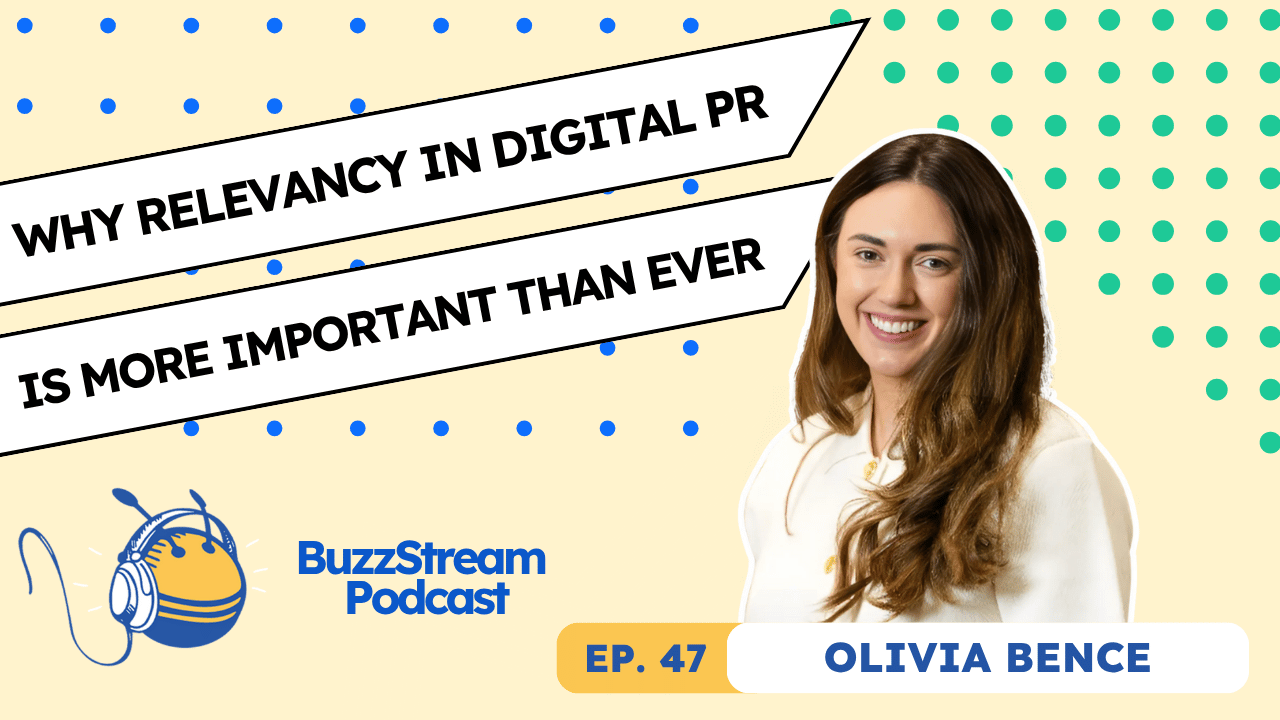
 Check out the BuzzStream Podcast
Check out the BuzzStream Podcast

